Nestled amidst the rugged beauty of the American Rockies, Yellowstone National Park stands as a testament to the untamed wonders of the natural world. Encompassing over 2.2 million acres of pristine wilderness, this iconic park is celebrated for its mesmerizing geothermal features, diverse wildlife, and, perhaps most enticing of all, its extensive network of hiking trails. If you yearn for an adventure that transports you into the heart of nature's grandeur, then Yellowstone's hiking trails offer a captivating odyssey like no other.
This comprehensive guide is your key to unlocking the secrets of Yellowstone's hiking paradise. Whether you're a seasoned backpacker seeking challenging backcountry treks or a family looking for accessible day hikes, Yellowstone National Park beckons with trails that wind through geysers, traverse canyons, and reveal stunning vistas at every turn. As we embark on this virtual journey together, we'll unveil the essential tips and trail insights you need for an unforgettable hiking experience in Yellowstone. From packing your gear to staying safe among the park's iconic wildlife, let's dive into the unparalleled world of hiking in Yellowstone National Park.
Hiking Essentials in Yellowstone
Hiking in Yellowstone National Park is a breathtaking adventure, but it's essential to be well-prepared to fully enjoy the experience and ensure your safety while hiking in the national park. Here, we'll delve into the hiking essentials you need before setting foot on the hiking trails in Yellowstone National Park:
Permits and Regulations
Before embarking on your Yellowstone hiking adventure, familiarize yourself with the park's permit requirements and regulations. Depending on your chosen trail and the season, you may need a backcountry permit, day-use permit, or even a campsite reservation. These permits help manage visitor numbers and protect the park's pristine environment. Permits are always required for any backcountry camping. Make sure to obtain the necessary permits well in advance to secure your hiking plans. To obtain the necessary permits, click Here.
Safety First
Yellowstone's rugged terrain and diverse wildlife require a heightened awareness of safety precautions:
Bear Safety: Yellowstone is home to grizzly bears and black bears. Carry bear spray, make noise while hiking, and store food and scented items in bear-proof containers. Learn how to react during a bear encounter. When we go into the backcountry in Yellowstone, we always carry bear spray. Bear spray can be purchased on Amazon Here.
Weather Awareness: Yellowstone's weather can change rapidly, even in summer. Pack layers to stay warm and dry. Check the weather forecast and trail conditions before heading out. The park widely varies in elevation and you can have snowy conditions near Mt. Washburn and warmer conditions in the Lamar Valley.
High Elevation: The park's high elevation (averaging around 8,000 feet) can cause altitude sickness. Allow time for acclimatization if you're coming from lower elevations. Most people should be fine with altitude as most of the tall peaks are below 11,000 feet.
Essential Gear and Clothing
Packing the right gear and clothing is crucial for a comfortable and safe hiking experience:
Footwear: Invest in sturdy, waterproof hiking boots with good ankle support. Ensure they are broken in before your trip. We typically buy Columbia or Merrell brand hiking shoes and have always had a good experience with them.
Clothing: Dress in moisture-wicking layers to regulate your body temperature. Don't forget a waterproof jacket, a hat, and gloves. Having a waterproof jacket is important if there is a chance of rain while hiking.
Backpack: Choose a comfortable backpack with enough room for your essentials. Consider a hydration system or water bottles to stay hydrated.
Navigation: Carry a detailed map of your chosen trail and a reliable compass or GPS device. Familiarize yourself with the trail and its markers.
First Aid Kit: Pack a basic first aid kit with essentials like bandages, pain relievers, blister treatment, and any personal medications.
Leave No Trace
As responsible hikers, it's vital to follow Leave No Trace principles: (1) Pack out all trash, including food scraps and toilet paper. (2) Use established restroom facilities or follow proper backcountry waste disposal methods. (3) Stay on designated trails to protect fragile ecosystems. (4) Avoid trampling on delicate vegetation. (5) Minimize noise to preserve the park's tranquility and respect other hikers' experiences.
By adhering to these essential guidelines and making sure you have the right permits, safety measures, and gear, you'll be well-prepared to embark on your Yellowstone hiking adventure. Now that we've covered the essentials, let's explore the diverse array of trails that await you in this remarkable national park.
Yellowstone's Best Hiking Trails
Yellowstone National Park boasts a treasure trove of hiking trails, each offering its own unique blend of natural wonders. Whether you're seeking short and family-friendly day hikes, intermediate adventures, or challenging backcountry escapades, Yellowstone has a trail to match your hiking aspirations. Let's explore some of the park's most iconic and rewarding hiking trails:
Popular Day Hikes
Yellowstone's day hikes are perfect for visitors looking to explore the park's beauty without committing to overnight stays. These trails are well-maintained, easily accessible, and offer captivating glimpses of Yellowstone's natural wonders:
Old Faithful Geyser Trail: Begin your Yellowstone journey with a visit to the world-famous Old Faithful. This short boardwalk loop showcases not only the eponymous geyser but also a multitude of other geothermal features, including colorful hot springs and spouting geysers. For our detailed trail write up click Here.
Grand Canyon of the Yellowstone Trail: This trail takes you along the rim of the awe-inspiring Grand Canyon of the Yellowstone. Marvel at the breathtaking Upper and Lower Falls, and enjoy several vantage points with panoramic views of the canyon's sheer beauty.
Tower Falls Trail: Located in the picturesque Tower Falls area, this easy-to-moderate hike leads you to the stunning Tower Falls and Yellowstone River. The trail meanders through a lush forest, and the misty cascade at the end is a refreshing reward. For our detailed trail write up click Here.
Storm Point: Located near Lake Yellowstone, this easy hike gives you great views of Lake Yellowstone and the wind-worn section that is exposed to the weather in this location. For our detailed trail write up click Here.
Intermediate Hikes
For those seeking a bit more of a challenge and deeper immersion into Yellowstone's wilderness, these intermediate hikes offer a perfect blend of natural wonders and exploration:
Mount Washburn Trail: Ascend to the summit of Mount Washburn for sweeping vistas of the park's expansive landscapes. The trail leads through alpine meadows, offering the opportunity to spot bighorn sheep and other wildlife.
Beaver Ponds Trail: A leisurely hike through the forest brings you to a series of ponds, where beavers and muskrats can sometimes be seen building damns in the water. For our details trail write up click Here.
Lone Star Geyser Trail: This relatively easy hike leads to the Lone Star Geyser, which erupts predictably every 3 hours. Witnessing this geothermal marvel in action is a unique Yellowstone experience.
Lost Lake Trail: The Lost Lake Hike is a great hike to a secluded 6-acre lake that is hidden away from the main roads in Yellowstone National Park and is only accessible through a hike. The Lost Lake Hike offers some amazing scenery to those who undertake this adventure in Yellowstone National Park. This is a spectacular day hike that the whole family will enjoy and it is well worth the trip. For our details trail write-up up click Here.
Backcountry Adventures
For the intrepid hiker seeking a more remote and challenging experience, Yellowstone's backcountry trails promise a true wilderness immersion:
Thorofare Trail: Considered one of the wildest and most remote trails in the park, the Thorofare Trail takes you deep into the heart of Yellowstone's wilderness. It offers opportunities for wildlife encounters, including grizzlies and wolves.
Shoshone Geyser Basin Trail: Accessed via the remote Bechler Ranger Station, this backcountry hike leads to the Shoshone Geyser Basin, where you can soak in the thermal wonders away from the crowds.
Heart Lake Trail: This trail leads to the serene Heart Lake and provides access to remote campsites. It's a fantastic option for those seeking solitude and a chance to explore lesser-visited corners of the park.
Whether you're exploring the easily accessible wonders of Yellowstone's day hikes or venturing deep into the wilderness on backcountry trails, each hike in this remarkable national park promises a unique adventure and a deeper connection with the natural world. Now, let's delve into important considerations for safety and wildlife encounters as you embark on your chosen Yellowstone hiking adventure.
Wildlife and Safety While Hiking in Yellowstone
Hiking in Yellowstone National Park is an opportunity to immerse yourself in a pristine natural environment teeming with wildlife. From the majestic bison and elk to the elusive wolves and bears, the park's diverse fauna adds to its allure. However, sharing the trail with these wild creatures requires a heightened awareness of safety measures to ensure a safe and memorable hiking experience:
Bear Safety
Yellowstone is home to both grizzly bears and black bears. While bear encounters are relatively rare, it's crucial to be prepared and know how to react:
Bear Spray: Carry bear spray, which is a highly effective deterrent against bear attacks. Ensure it's easily accessible, and know how to use it. Purchase or rent it from stores near the park or through Amazon in advance of your trip, by clicking Here to go to Amazon's selection of Bear Sprays.
Hike in Groups: Hiking in groups is safer than hiking alone, as bears are more likely to avoid larger parties. Make noise while hiking to alert bears to your presence.
Bear Behavior: Learn to identify signs of bear activity, such as scat, tracks, and torn-up logs. Be especially cautious near berry patches and carcasses, as these can attract bears.
Back Away Slowly: If you encounter a bear, back away slowly while speaking in a calm voice. Never run, as this may trigger a chase response.
Play Dead (Grizzlies Only): If a grizzly bear charges you and makes contact, play dead by lying flat on your stomach, protecting the back of your neck with your hands. Spread your legs to make it harder for the bear to turn you over. (Note this is what is recommended by the experts online and has not been tested out by us)
Fight Back (Black Bears Only): If a black bear attacks, fight back aggressively. Use any available objects as weapons and aim for the bear's face. (Note this is what is recommended by the experts online and has not been tested out by us)
Wildlife Etiquette
In addition to bears, Yellowstone's Wildlife includes bison, elk, wolves, foxes, pronghorn antelope, badgers, coyotes, and more. Respect their space and maintain a safe distance:
Keep Your Distance: Admire wildlife from a safe distance, which is at least 100 yards from bears and wolves and 25 yards from all other animals. Use binoculars or a telephoto lens for close-up views.
Don't Feed the Animals: Feeding wildlife is not only illegal but also harmful to their health and safety. Human food can disrupt their natural behavior and may lead to aggressive encounters.
Stay on the Trails: Stick to designated trails and boardwalks to avoid disturbing sensitive habitats and encountering wildlife unexpectedly.
General Safety
In addition to wildlife encounters, consider these general safety tips while hiking in Yellowstone:
Stay on Marked Trails: Straying off designated trails can damage fragile ecosystems and increase your risk of getting lost.
Carry Essentials: Pack essential items, including a map, compass, first aid kit, extra clothing, food, and water purification tools.
Emergency Communication: Cell phone coverage is limited in the park. Consider carrying a satellite communication device in case of emergencies.
Share Your Itinerary: Inform someone of your hiking plans, including the trail you'll be on and your expected return time.
Seasonal Considerations for Hiking in Yellowstone
Yellowstone National Park's dramatic landscapes transform with the changing seasons, offering hikers a kaleidoscope of experiences throughout the year. Understanding the nuances of each season is key to planning a memorable and safe hiking adventure in this iconic wilderness:
Spring (April to June)
Wildlife Activity: Spring marks the awakening of Yellowstone's wildlife. Bison and elk give birth to their young and bear cubs make their first appearances. Birdwatching is excellent during this season. During this time, Yellowstone is sometimes called the American Serengeti, because of the amount of wildlife. Our family loves to visit during this season and you can see a handful of the photographs we have taken of wildlife by clicking Here.
Wildflower Blooms: As the snow melts, colorful wildflowers blanket the park's meadows and valleys. This season provides a vibrant backdrop for your hikes.
Weather Variability: Be prepared for rapidly changing weather conditions. Snow may still linger at higher elevations, and trails at lower elevations can be muddy.
Trail Accessibility: Some higher-elevation trails may remain snow-covered or closed due to lingering snowdrifts. Check trail status and accessibility before heading out.
Summer (July to August)
Peak Visitor Season: Summer is Yellowstone's busiest time, with warm temperatures and longer daylight hours. Popular trails and attractions can be crowded.
Wildlife Watching: Wildlife activity continues in the summer, and this season provides great opportunities for spotting grizzlies, wolves, and other animals.
Trail Accessibility: Most trails are open and accessible in the summer. However, popular areas like the Grand Canyon of the Yellowstone can be congested.
Wildfire Awareness: Be aware of wildfire risk, especially in late summer. Check for trail and road closures due to fire activity.
Fall (September to October)
Fall Foliage: Yellowstone's aspen and cottonwood trees turn brilliant shades of yellow and gold, creating a stunning backdrop for autumn hikes.
Decreased Crowds: Visitor numbers start to decline in the fall, making it a great time for quieter hikes and wildlife viewing.
Weather Transition: Be prepared for cooler temperatures and the possibility of early snowfall at higher elevations.
Closures: Some facilities, campgrounds, and services begin to close for the season in the fall. Check for park updates and availability.
Winter (November to March)
Winter Wonderland: Yellowstone becomes a serene winter wonderland, with pristine snowscapes and unique opportunities for cross-country skiing and snowshoeing.
Limited Accessibility: Most roads are closed to vehicles in winter, limiting access to certain areas. However, some trails remain open for winter sports enthusiasts.
Safety Considerations: Winter hiking requires specialized gear and knowledge of avalanche safety. It's essential to be well-prepared for extreme cold and snow and only very experienced hikers should consider hiking during this season.
Wildlife Viewing: While some animals hibernate or migrate, you can still encounter bison, elk, and other hardy species in their winter habitats.
When planning your Yellowstone hiking adventure, consider the season that aligns with your preferences and interests. Each season offers its unique charm, from vibrant spring blooms to the tranquility of winter snowscapes. Additionally, keep in mind that road and trail closures may impact your itinerary, so always check for the latest updates from the park authorities. Now, let's explore insider tips and tricks to enhance your Yellowstone hiking experience and make the most of your visit.
Insider Tips and Tricks for Hiking in Yellowstone
Hiking in Yellowstone National Park is an adventure like no other, and a few insider tips and tricks can help you make the most of your visit while enhancing your safety and enjoyment:
Beat the Crowds
Early Mornings: To avoid crowds and wildlife at their most active, hit the trails early in the morning. Sunrise hikes offer unparalleled solitude and incredible photo opportunities.
Off-Peak Times: Consider visiting popular attractions like Old Faithful during lunchtime or late afternoon when tour buses have departed.
Hidden Gems: While iconic trails are a must, explore lesser-known paths like the Avalanche Peak Trail or Storm Point Loop Trail for a quieter and more intimate Yellowstone experience.
Backcountry Bliss: For a true wilderness experience, venture into the park's backcountry trails, where you're more likely to find solitude and untamed landscapes.
Photography Tips
Golden Hour: The soft, warm light of sunrise and sunset (the golden hour) casts a magical glow on Yellowstone's landscapes. Bring your camera and tripod for stunning shots.
Wildlife Photography: Use a telephoto lens for wildlife photography, and maintain a safe distance. Remember to turn off the flash, which can disturb animals.
Pack Smart
Snacks and Water: Carry ample snacks and water, especially if you plan to be on the trail for an extended period. Water purification tools can be handy for refilling streams.
Layer Up: Dress in layers to adapt to changing weather conditions. Yellowstone's high elevations can bring chilly surprises even in summer.
Wildlife Etiquette
Stay Informed
Leave No Trace
Follow Leave No Trace Principles
Conserve Water and Energy
Water Conservation: Yellowstone's water resources are precious. Use water sparingly when camping and hiking. Purify water from natural sources rather than relying on disposable plastic bottles.
Energy Efficiency: Reduce energy consumption by turning off lights, heaters, and air conditioners when not in use at park lodges or accommodations outside the park.
Support Conservation Efforts
Keep Your Distance: Respect wildlife by adhering to recommended viewing distances. Use binoculars or a telephoto lens for close-ups and always give animals the right of way on the trail.
Bear Bells: Consider attaching bear bells to your backpack to alert bears to your presence. However, bear spray is your most critical defense.
Visitor Centers: Visit one of Yellowstone's visitor centers for the latest trail conditions, weather updates, and park information. Rangers can provide valuable insights.
Park Apps: Download official park apps for maps, trail information, and real-time alerts about road and trail closures.
Leave No Trace
Responsible Hiking: Follow Leave No Trace principles by packing out all trash, staying on designated trails, and respecting the park's fragile ecosystems.
Carry a Waste Kit: If hiking in the backcountry, carry a waste disposal kit for proper disposal of human waste. Practice Leave No Trace even in remote areas.
By incorporating these insider tips and tricks into your Yellowstone hiking adventure, you'll not only make the most of your visit but also contribute to the preservation of this pristine wilderness. Now, let's delve into the importance of environmental responsibility and how you can help protect Yellowstone National Park for future generations.
Environmental Responsibility for Hiking in Yellowstone
Hiking in the natural wonderland of Yellowstone National Park is a privilege that comes with a vital responsibility – preserving the park's pristine beauty and ensuring its survival for generations to come. Here's how you can be an environmentally responsible hiker in Yellowstone:
Follow Leave No Trace Principles
Plan Ahead and Prepare: Thoroughly plan your hike, including obtaining permits, checking trail conditions, and understanding the regulations. This reduces the risk of accidents and minimizes the impact on the environment.
Travel and Camp on Durable Surfaces: Stick to designated trails and campsites to prevent soil erosion and protect fragile vegetation. Avoid creating new paths, even if it seems convenient.
Dispose of Waste Properly: Pack out all trash, leftover food, and litter. Dispose of waste in designated bins or carry it with you until you can dispose of it responsibly. Follow proper backcountry waste disposal methods, such as using a waste kit for human waste.
Leave What You Find: Avoid picking plants, disturbing historical or cultural sites, or removing rocks or other natural features. Preserve the park's natural and cultural heritage for future generations.
Minimize Campfire Impact: Use a camp stove for cooking instead of making fires, which can scar the landscape. If fires are permitted, use established fire rings and keep them small.
Respect Wildlife: Observe animals from a safe distance and never feed them. Human food can harm wildlife and alter their natural behavior.
Be Considerate of Other Visitors: Keep noise levels down, yield the trail to other hikers, and maintain a friendly and respectful demeanor.
Reduce Your Carbon Footprint
Use Sustainable Transportation: Consider carpooling or using public transportation to reach the park. Once inside, utilize the park's shuttle system or rent bicycles for eco-friendly transportation.
Minimize Waste: Carry a reusable water bottle and food containers to reduce single-use plastics. Dispose of waste responsibly, recycling when possible.
Conserve Water and Energy
Water Conservation: Yellowstone's water resources are precious. Use water sparingly when camping and hiking. Purify water from natural sources rather than relying on disposable plastic bottles.
Energy Efficiency: Reduce energy consumption by turning off lights, heaters, and air conditioners when not in use at park lodges or accommodations outside the park.
Support Conservation Efforts
Donate to Park Charities: Consider donating to organizations that support Yellowstone's conservation and preservation efforts.
Participate in Volunteer Activities: If you have the opportunity, join park-sponsored volunteer programs to contribute directly to conservation and restoration projects.
Educate Others: Share your knowledge of environmental responsibility with fellow hikers and travelers to create a culture of stewardship.
By embracing these principles of environmental responsibility, you can play a crucial role in safeguarding the natural wonders of Yellowstone National Park. As you embark on your hiking adventures, remember that your actions today can make a lasting impact on the park's future. Yellowstone's pristine landscapes, diverse wildlife, and geothermal wonders depend on responsible hikers like you.
Additional Resources for Hiking in Yellowstone
Exploring Yellowstone's hiking trails and wilderness requires careful planning and access to valuable resources to ensure a smooth and memorable adventure. Here are some additional resources to help you make the most of your Yellowstone hiking experience:
Official Yellowstone National Park Resources
Yellowstone National Park Website: The official park website (www.nps.gov/yell) is your primary source for up-to-date information on trail conditions, road closures, permits, and regulations. It also provides details on visitor centers, camping, and entrance fees.
Visitor Centers: Stop by one of the park's visitor centers for maps, brochures, and guidance from knowledgeable rangers. They can provide real-time updates on park conditions and recommendations for hikes.
Hiking Guides and Books
Guidebooks: Consider purchasing a comprehensive hiking guidebook specific to Yellowstone. These resources often provide detailed trail descriptions, difficulty levels, and historical context. We have multiple trail write-ups on our website, from our multiple hikes in Yellowstone National Park, but we would also recommend the following guides: Hiking Yellowstone National Park,
Maps: High-quality topographic maps of Yellowstone's hiking trails are invaluable for planning and navigating your hikes. Maps can be purchased at park visitor centers or Online through Amazon Here.
Smartphone Apps and Online Resources
Yellowstone Mobile App: Download the official Yellowstone National Park app for real-time updates, interactive maps, and information about points of interest, including hiking trails.
Weather Apps: Install weather apps to monitor current conditions and forecasts, especially if you plan to hike in variable weather.
Campground Reservations: If you plan to camp, make campground reservations through the official Yellowstone National Park website well in advance, as campgrounds can fill up quickly, especially during the peak season.
Lodging: Yellowstone offers a variety of lodging options, from campgrounds and lodges within the park to accommodations in gateway communities. Booking lodging in advance is highly recommended. We have stayed at Mammoth Hot Springs, Lake Yellowstone, and the Old Faithful Inn. We have also stayed outside the park in Gardner Montana as well. All of these locations are great places to stay for your trip to Yellowstone.
Safety Equipment and Gear Rentals
Bear Spray: Purchase or rent bear spray from stores near the park entrance. Ensure you are familiar with its proper usage. Bear spray can be purchased Here.
Gear Rentals: If you're traveling light or need specialized equipment like bear-resistant food canisters or snowshoes (for winter hiking), consider renting gear from local outfitters. We have the following bear canister that we have used during our hikes in Yellowstone.
7.6. Ranger-Led Programs/Ranger Talks and Guided Hikes: Yellowstone rangers lead informative talks and guided hikes throughout the park. Check the park's event schedule for opportunities to join these programs and gain deeper insights into Yellowstone's natural and cultural history.
Nearby Amenities
Gateway Communities: Yellowstone's gateway towns offer amenities such as restaurants, grocery stores, gas stations, and medical facilities. These can be essential for stocking up on supplies or seeking assistance in case of emergencies. The communities of West Yellowstone, Gardiner Montana, and Jackson Hole, all have such amenities.
Restaurants and Dining: Find information on dining options both within the park and in nearby communities to refuel after your hikes. We loved the dining experience at Lake Yellowstone and the Old Faithful Lodge during our trips.
These additional resources will aid you in your journey through Yellowstone's diverse landscapes, ensuring a well-prepared and enjoyable hiking experience. As you embark on your adventures, remember that thorough planning and access to reliable information are essential for a successful and memorable visit to Yellowstone National Park.
Conclusion
Hiking in Yellowstone National Park is a voyage into the heart of the natural world, where geysers erupt in dramatic displays, wildlife roams freely, and pristine landscapes unfold in all their glory. As you've explored this comprehensive guide, you've uncovered the essential knowledge and insider tips needed for a rewarding and safe hiking adventure in this iconic wilderness.
Yellowstone's hiking trails cater to every level of hiker, from family-friendly strolls to challenging backcountry treks, promising a diverse range of experiences amidst breathtaking scenery. Yet, beyond the stunning landscapes and abundant wildlife, there's a profound responsibility that comes with visiting this national treasure—a duty to protect and preserve it.
By adhering to Leave No Trace principles, reducing your carbon footprint, and supporting conservation efforts, you contribute to the enduring legacy of Yellowstone for future generations. As you traverse the trails and witness the wonders of this remarkable park, remember that your actions today can shape the destiny of this wilderness tomorrow.
So, lace up your hiking boots, pack your essentials, and set forth on your Yellowstone hiking adventure with the knowledge that you are part of a privileged community of stewards, entrusted with the care of one of the world's most cherished natural wonders. As you explore, be inspired, be safe, and most importantly, be a responsible guardian of the magnificent Yellowstone National Park. The wilderness awaits you.

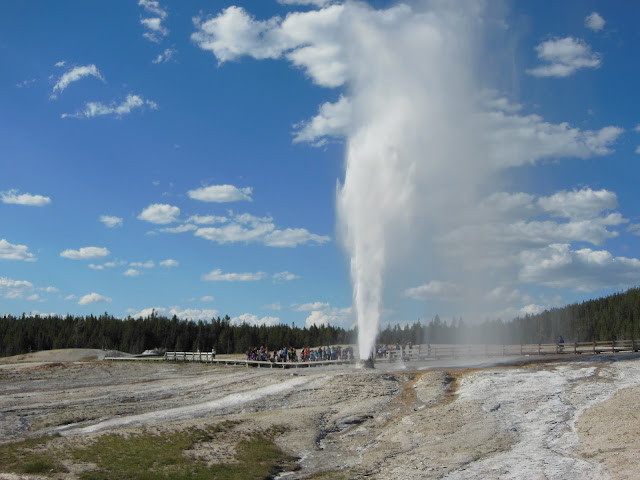



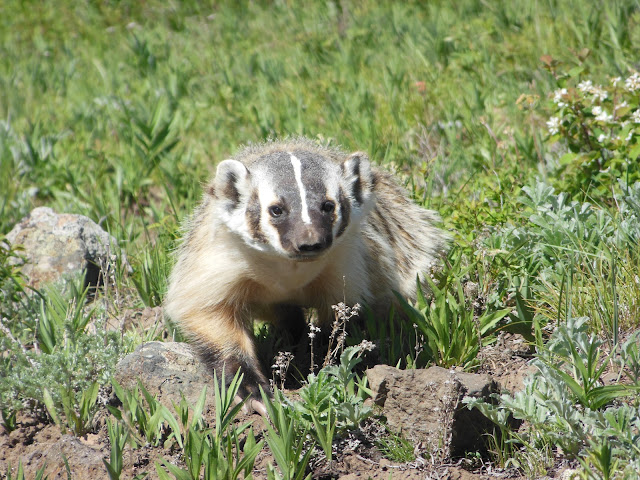
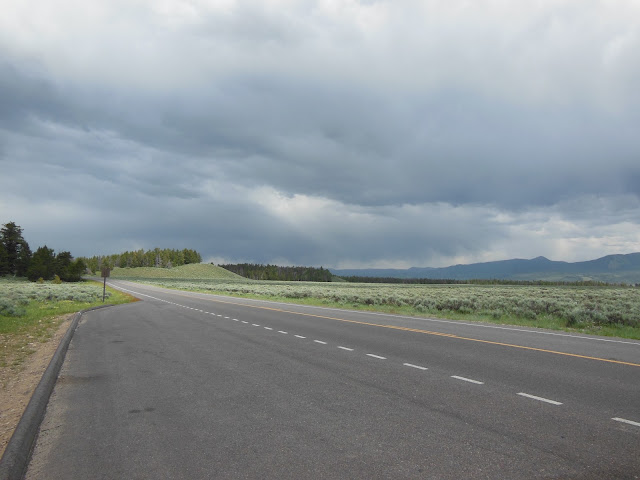

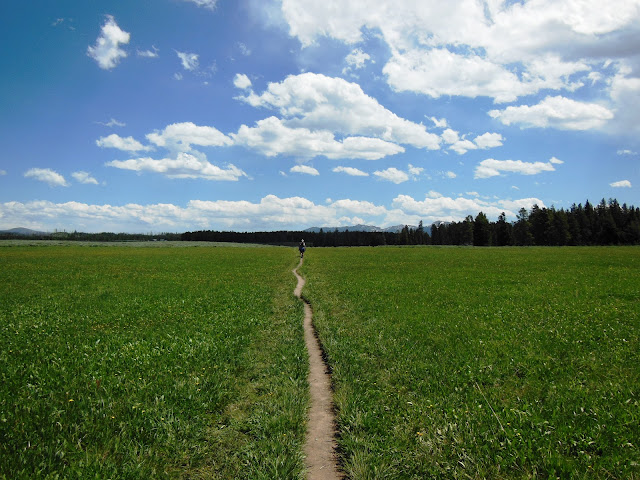


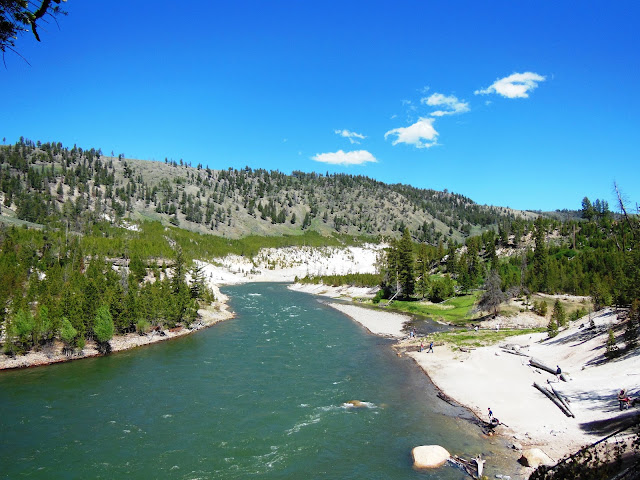
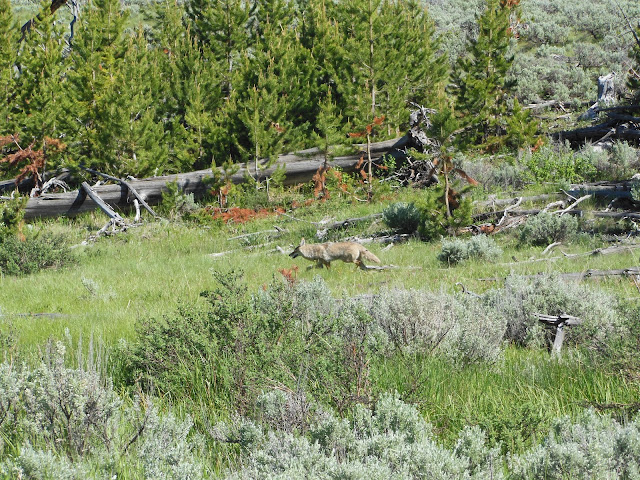

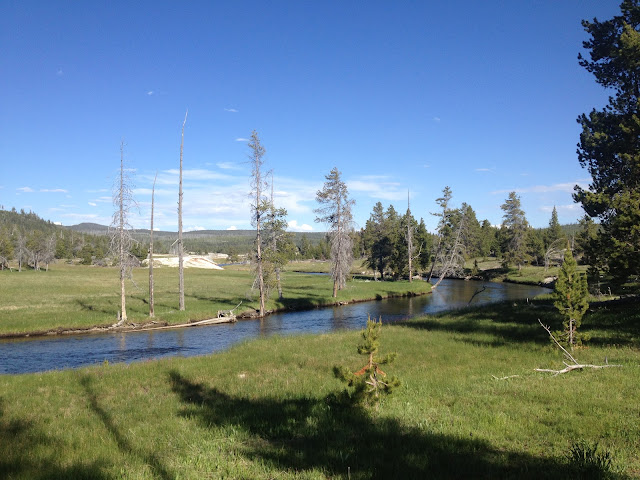


Comments
Post a Comment
Ashley and I encourage and welcome our readers to submit comments about their experiences on the trails we have posted on our blog or about their own hiking experiences in general.